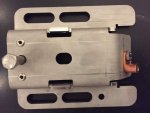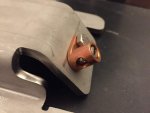Does anyone have a photo showing how to bond a Coverstar autocover (specifically, the steel brackets that support a walk on lid?)
We are finishing up our pool build (in ground with Coverstar autocover) and during the final inspection, our inspector noticed the brackets for the cover lid were not bonded. The bonding wire is attached to the Coverstar mechanism lugs at both ends, but the manufacturer requires that any brackets over 4 inches (ours are 13) also be bonded. The installation manuals clearly state that but do not specify where to attach the additional lugs. The only other reference to it I could find was in a 2009 notice regarding a design change of the brackets to include a hole for a bonding lug (with no illustration, though I think it is a hole on the part of the bracket that attaches to the pit wall).
The PB is unfamiliar with this requirement but our inspector flagged it during the final inspection (as did a master electrician who looked at it and some other issues we are having).
TIA!
We are finishing up our pool build (in ground with Coverstar autocover) and during the final inspection, our inspector noticed the brackets for the cover lid were not bonded. The bonding wire is attached to the Coverstar mechanism lugs at both ends, but the manufacturer requires that any brackets over 4 inches (ours are 13) also be bonded. The installation manuals clearly state that but do not specify where to attach the additional lugs. The only other reference to it I could find was in a 2009 notice regarding a design change of the brackets to include a hole for a bonding lug (with no illustration, though I think it is a hole on the part of the bracket that attaches to the pit wall).
The PB is unfamiliar with this requirement but our inspector flagged it during the final inspection (as did a master electrician who looked at it and some other issues we are having).
TIA!






